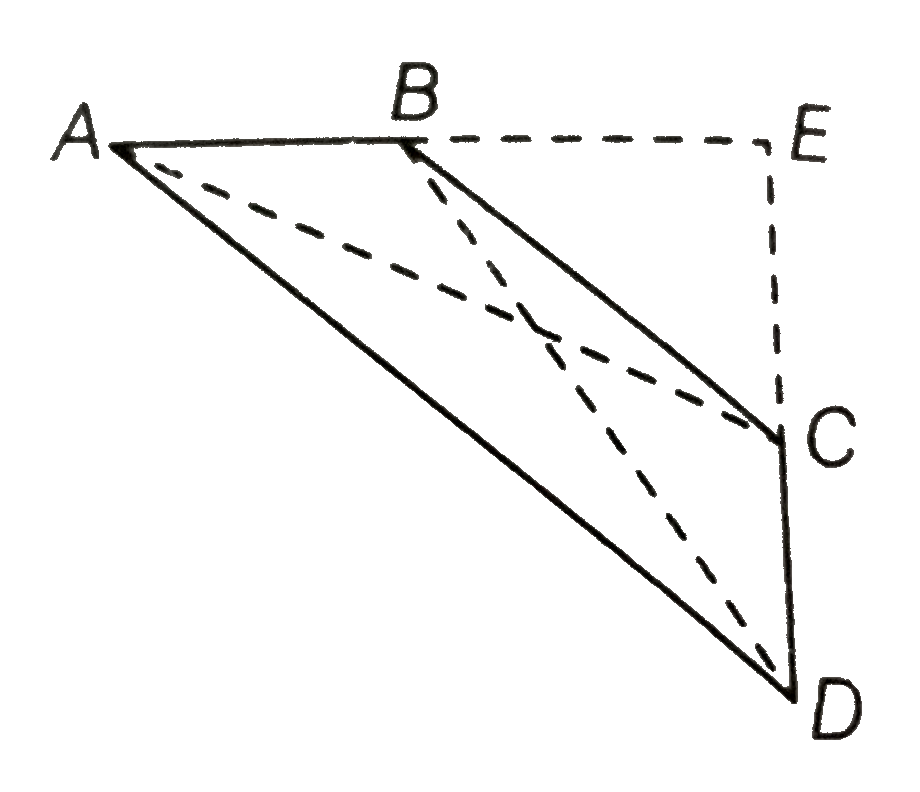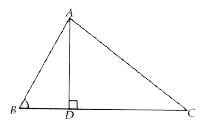In a quadrilateral ABCD, ∠A+∠D=90∘. Prove that
AC2+BD2=AD2+BC2
Given Quadrilateral ABCD, in which ∠A+∠D=90∘
To prove AC2+BD2=AD2+BC2
Construct Produce AB and CD to meet at E.
Also, join AC and BD.
Proof In ΔAED,∠A+∠D=90∘ [given]
∴∠E=180∘−(∠A+∠D)=90∘
[∵ sum of angles of a triangle=180∘]
Then by Pythagoras theroem, AD2=AE2+DE2
In ΔBEC, by pythagoras theorem, BC2=BE2+EF2
On adding both equations, we get
AD2+BC2=AE2+DE2+BE2+CE2..(i)
In ΔAEC, by Pythagoras therom,
AC2=AE2+CE2
and in ΔBED, by pythagoras theorem
BD2=BE2+DE2
On adding both equation weget
AC2+BD2=AE2+CE2+BE2+DE2...(ii)
From Eqs. (i) and (ii),
AC2+BD2=AD2+BC2 Hence proved

Topper's Solved these Questions
Similar Questions
In a quadrilateral ABCD, ∠A+∠D=90∘. Prove that AC2+BD2=AD2+BC2.
View SolutionIn △ABC,∠A=60∘ prove that BC2=AB2+AC2−AB.AC
View SolutionIn a quadrilateral ABCD, ∠B=90∘andAD2=AB2+BC2+CD2 prove that ∠ACD=90∘ .
View SolutionIn Figure 2,AD⊥BC. Prove that AB2+CD2=BD2+AC2.
View SolutionIn a quadrilateral ABCD, prove that AB2+BC2+CD2+DA2=AC2+BD2+4PQ2, where P and Q are middle points of diagonals AC and BD.
View SolutionIn a quadrilateral ABCD prove that AB2+BC2+CD2+DA2=AC2+BD2+4PQ2 where P and Q are middle points of diagonals AC and BD.
View SolutionIn the figure , ABC is triangle in which ∠ABC<90∘andAD⊥BC. Prove that AC2=AB2+BC2−2BC⋅BD.

View SolutionIn a rhombus ABCD, prove that AC2+BD2=4AB2
View SolutionIn a ΔABC,∠B is an acute-angle and AD⊥BC
Prove that :
(i) AC2=AB2+BC2−2BC×BD
(ii) AB2+CD2=AC2+BD2
View SolutionIn quadrilateral ABCD, AB ||CD and AD= BC, prove that ∠A=∠B.
View Solution

